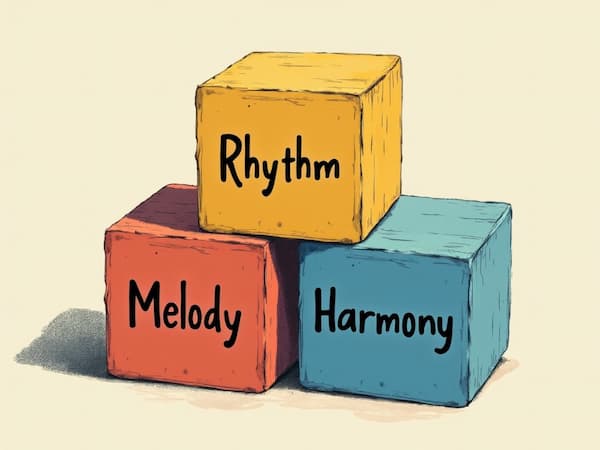Rhythm, melody and harmony. This is the trinity behind all music, and the foundation of it. Rhythm, melody and harmony are the most basic elements, and the ones from which all musical progress has derived. A musician will spend a lifetime trying to master them, whether from a composing perspective or from the one of a performer. Therefore, an excellent understanding of these is essential to any musician. In fact, without these three together, music can only exist in a very reduced form. Let’s have a look at them independently to understand how they have each influenced the journey of music.

Rhythm is perhaps the most important element of music. It is the most basic. And without it, there is no music. It is essential. Children understand from a very young age. No culture in the world has ignored it, and all have approached it in a very unique way. In fact, rhythm is everywhere — even in the sounds of our daily life. Of course, all music includes rhythm, but some pay more attention to it. Some pieces which make good use of rhythm for instance, include the Rite of Spring — and pretty much any Stravinsky works — as well as many of the Eastern Europe composers’ works; Janáček, Bartok, Mussorgsky, Scriabin, Khatchaturian, Shostakovich etc. Depending on the genre of music, there is more or less of a focus on it. Rhythm is perhaps the most intuitive of all elements of music.
Aram Khachaturian – Toccata
Melody is the second most important aspect of music. It is also one of the hardest to master. A good melody catches the listener’s ear. As times evolved, the perception of melody became more and more complex, and at times, melody almost got forgotten in favour of our last element. Like harmony, melody has natural ways to evolve, and some of the biggest challenges that musicians have found is to maintain the balance between the natural tendencies of melody and the desire to explore unknown territories. Sometimes, this has led to the melody being un-melodic. Some of the best use and development of melodic works reside during the classical, late-classical and romantic era; the works of Mozart, Beethoven or Schubert are often so well-known thanks to their strong melodic aspect. Melody is often approached through taste and emotions.
Wolfgang Amadeus Mozart: Clarinet Concerto in A major, K.622
Harmony. It is perhaps the most developed aspect of music. In fact, it has gone through many revolutions, particularly in the Western world. If harmony initially followed the principles of nature, themselves dictated by the natural laws of harmony, very quickly composers decided to move away from the most elementary function of harmony, to explore it holistically, and sometimes to the extremes. Throughout the history of music, there have been some major figures who have changed how harmony is approached; Bach set the rules, Beethoven started playing with them, followed by Chopin, Liszt, Satie, Debussy up to Schoenberg and the New Vienna School, who turned it upside down! The treatment of harmony is often very intellectual.
SEONG-JIN CHO / Chopin’s 24 Preludes, Op. 28
Out of these three elements, rhythm is the most comprehensible, whilst melody is the most attractive, and harmony the most exciting. But of course, it is when they are combined that the magic happens.
Each culture has its own perception of these elements. For instance, in Indian music, rhythm and melody are the two most important factors. In African music, however, it is rhythm. In European music, it is melody and harmony. And each culture can learn from other cultures in order to approach rhythm, melody and harmony in tasteful and innovative ways.
For more of the best in classical music, sign up for our E-Newsletter



